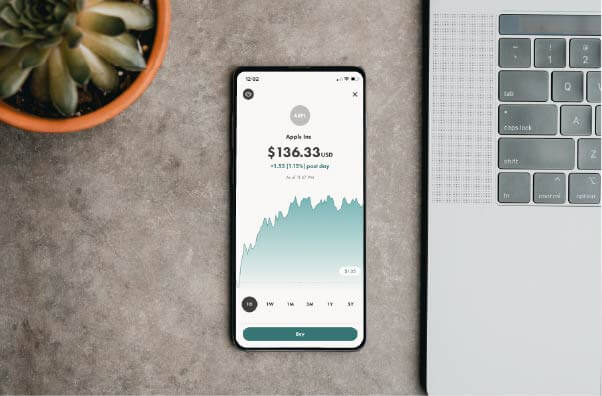Flow-through is the amount of incremental profit that flows through a hotel relative to the previous year. Essentially, it is the percentage of incremental profit that flows to the bottom line, or in other words, it is the hotel’s income after expenses have been deducted from revenues. This flow-through is usually directly related to a revenue surplus relative to what was budgeted.
Flow-through in the hospitality industry is fundamental to understanding how profitable your business is, especially across all the different departments. By managing this figure, you can fully understand the structure’s financial results, and project for future growth. In this article we will discuss what flow-through means, how it works, how to calculate it, and why it’s crucial in the hotel industry.
Table of contents
What does flow-through mean?
In the case of the hospitality industry, understanding how different departments affect the hotel’s actual revenue is essential in order to turn revenue into profit. It is also the key to sustained growth.
Traditionally, occupancy rate, average daily rate (ADR) and revenue per available room (RevPAR) were the key metrics to understand a hotel’s performance, but flow-through goes a step further.
While a hotel gets revenue from all the different services they offer, it’s not mere profit, as a good part of the revenue needs to be used to pay for human resources, to pay utilities, suppliers and bills, among other expenses. Profit is only considered once all those expenses are covered, and this process is known as flow-through, which can be represented as a percentage. In other words, flow-through determines what made it through from revenues to profit.
How does flow-through work?
So now that we understand what flow-through is, let’s take a look at how it works.
Essentially, flow-through goes beyond basic hotel data analytics, instead, it allows you to compare predicted numbers to actual numbers in order to see if you are making the profit you should be making. Flow-through is a way of benchmarking and seeks to solve the question: “How much incremental profit did my hotel make?”
Let’s take an example. Suppose you raised your room rate by 8% a night, but at the same time the unions established a 20% increase in minimum wages for staff. Even though you raised the rooms by 8%, you will have less revenue because your expenses increased, so you might need to raise your rates even further to be able to make the same profit prior to the wage increase.
By understanding this concept, we can further look at what else would need to be adjusted in order to compensate for the additional costs in order to make (or surpass) the projected profit. Now let’s take a look at how to calculate this number.
How to calculate flow-through
To calculate flow-through, you will be looking at the difference in profit divided by the difference in revenue. You can calculate this for any department, whether that be food and beverage, rooms or banqueting.
You just need to start by subtracting the revenues from two different periods. Then you will subtract the profit from the same to periods, and then divide the difference in revenues by the difference in profit. Expressed in an equation, Flow through looks like this:
(Actual Profit – Budgeted Profit) / (Actual Revenue – Budgeted Revenue)
Profit is the money you take home after all the expenses are paid off. Since costs can vary, your budgeted profit may differ from your actual profit due to unexpected variables.
Revenue, on the other hand, is calculated by multiplying the hotel’s average daily rate by its occupancy rate. The Gross Operating Profit or GOP in the hospitality industry is an important KPI that shows how profitable the business is after subtracting operating expenses. This is calculated by subtracting Gross Operating expenses from gross operating revenue.
In order to calculate the flow-through, you need to look at the variance between what was budgeted and what was actually made. It essentially measures the variance between revenue and gross operating profit (GOP).
So for example:
|
Actual |
Budget |
Variance |
|
|
Revenue |
$250,000 |
$225,000 |
$25,000 |
|
Net Profit |
$100,000 |
$80,000 |
$20,000 |
The good news in this example is that the actual revenue exceeded what was projected ($20,000/$25,000). The flow percentage in this case is 80%, meaning that 80% of the additional revenue was turned into actual profit.
The net profit percentage that was budgeted was 35% ($80,000 / $225,000), so we have far exceeded the profit rate. While that seems beneficial, it is important to note that additional revenue should be retained at a higher level due to the fact that our fixed costs are already covered.
Flow-through typically ranges from 35-60%. Rooms can range from 60-75% and food and beverage from 35-50%, so this example of 80% is definitely on the high end, but it’s useful to demonstrate the concept. It’s ideal to measure flow-through to a prior period rather than measuring to budget or forecast because it’s a more direct comparison.
The last concept that is important to understand is negative flow because when revenues decrease, hoteliers want to be able to compensate so as not to impact profit lines. The calculation for negative flow-through is the same, but it will require some extra analysis.
Why is flow-through so important?
Understanding flow-through is key to maximizing profit and aligning this with the business model. By measuring this percentage you can understand which areas of the business are doing well (whether that be the room rates, the extra services, etc.) and head in that direction. Furthermore, flow-through helps give a better picture of profitability and the amount of net cash generated, as well as return on investment.
Managing flow-through is key to better understanding your profit model. You can use this as a tool in order to grasp what happens when revenues fluctuate across departments, and how to adjust accordingly so that this doesn’t impact the overall profitability. Furthermore, it helps give you a better idea of your actual financial results.
Conclusion
As we’ve discussed in this article, flow-through is essential to better managing the profitability of your business. We’ve looked at what it is, why it’s important, and how to calculate the percentage. Using these measurements is the key to making important decisions about the future of your business.
Furthermore, flow-through is an important tool to understand how well you manage profitability and how well the hotel performs. It can be a useful tool across departments to draw conclusions about which areas are under-performing, and to better realize the ‘why’ behind the numbers.
The success of any hotel business model lies in having the ideal mix of services, ideal room rates and educating your staff to upsell accordingly to what generates the biggest profit margins in order to transfer the most revenue possible to the bottom line. Fully understanding your hotel’s flow-through percentage is fundamental to developing a successful business that can be sustained in the future.

Author
Eva Lacalle
Eva has over a decade of international experience in marketing, communication, events and digital marketing. When she's not at work, she's probably surfing, dancing, or exploring the world.

Essential hotel technology for general managers
Download now
Hospitality hot takes straight to your inbox


.webp)